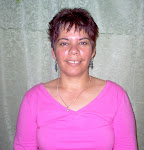 COLOR GUIDE FOR YOUR FOOD BENEFITS
COLOR GUIDE FOR YOUR FOOD BENEFITS
Dr. David Heber, of the UCLA Center for Human Nutrition recommends a diet with fruits and vegetables across the spectrum of color. Heber, author of "What Color is Your Diet?" says Americans do not receive enough fruits and vegetables in their diets. He believes a category system he created would make it easier to consume the proper amount and types of vitamins needed in diets.
RED GROUP: (tomatoes, can of V8 juice, pink grapefruit, watermelon) These contain the carotenoid lycopene, which helps rid the body of free radicals that damage genes. Lycopene seems to protect against prostate cancer as well as heart and lung disease. Processed juices contain a lot of the beneficial ingredients. One glass of tomato juice gives you 50 percent of the recommended lycopene.
Yellow/Green Group (spinach greens, collard greens, mustard greens, turnip greens, yellow corn, green peas, avocado, honeydew melon) These are sources of the carotenoids lutein and zeaxanthin. These are believed to reduce the risk of cataracts and age-related macular degeneration. Lutein is a yellow-green substance that concentrates in the back of your eye. It may also reduce atherosclerosis.
Orange Group (carrots, mangos, apricots, cantaloupes, pumpkin, acorn squash, winter squash, sweet potatoes) These contain alpha carotene, which protects against cancer. They also contain beta-carotene, which the body converts to vitamin A.
It protects the skin against free-radical damage and helps repair damaged DNA. Beta-carotene is also good for night vision. It's important to note that these beneficial nutrients can be received from other foods, too. For instance vitamin is found in dairy products and meat. But it's not as beneficial because you get high calories and fat along with it.
Orange/Yellow Group (pineapple, orange juice, oranges, tangerines, peaches, papayas, nectarines) These contain beta cryptothanxin, which helps cells in the body communicate and may help prevent heart disease. Also, an orange contains 170 percent of the recommended daily vitamin C. It's interesting to note that the skin of an orange is high in a protective fat that has been found to kill cancer cells in humans and animals, which highlights the fact that two-thirds of all drugs come from the plant world.
Red/Purple Group (beets, eggplant, purple grapes, red wine, grape juice, prunes, cranberries, blueberries, blackberries, strawberries, red apples) These are loaded with powerful antioxidants called anthocyanins believed to protect against heart disease by preventing blood clots. They may also delay the aging of cells in the body. There is some evidence they may help delay the onset of Alzheimer's disease.
Green Group (broccoli, brussels sprouts, cabbage, Chinese cabbage or bok choi, kale)
These contain the chemicals sulforaphane and isocyanate and they also contain indoles, all of which help ward off cancer by inhibiting carcinogens. It's a fact that ten percent of the population - doesn't like broccoli. But it is important in diets because of the beneficial chemicals it contains.
White/Green Group (leeks, scallions, garlic, onions, celery, pears, white wine, endive, chives) The onion family contains allicin, which has antitumor properties. Other foods in this group contain antioxidant flavonoids like quercetin and kaempferol.
Source
>
.
Read more!
 What you may want to know about fluoride, but hadn't heard before!
What you may want to know about fluoride, but hadn't heard before!


































